Flexible molds do have their limitations however, in that it is difficult to create texture plates with them. If one has a large surface area to cover such as creating a 4 x 5 sheet, for example, it’s pretty much guaranteed that one will either end up with an unevenly textured piece, that is some areas will be more deeply impressed and others not enough and some of the details may look stretched. Even if one is successful in creating a texture plate with silicone rubber, creating a positive from such a large mold is difficult as the rubbery texture will shift and distort the image you are trying to copy. Another limitation with the flexible nature of such a mold is that if you are trying to create an equal front and back for a pendant, the stretchy nature of the mold might cause one to end up with 2 slightly different sized pieces.
Here is a short version tutorial on how to create a 2 sided item using a rigid mold.
 | Materials:
|
 | Step 1: Spritz or brush your mold with water. If you are going to use Fimo to cast from the mold, then do not use water as it will make the Fimo sticky. Use corn starch instead. |
 | Step 2: Condition clay, roll into ball and press into the mold. Starting in centre of clay press outward to edges of mold. |
 | Step 3: Use tissue blade starting at about centre of mold and slice away excess. Use the edges of mold as a horizontal blade guard or as an indicator of how much excess to trim. Hold the blade as horizontal as possible as not to slice into the mold. It’s kind of like slicing multi levels of colour clay for mokume gane. |
 | Step 4: Turn the mold 180 degrees and slice away clay excess on other half. |
 | Step 5: Using your thumbs, push the clay toward centre of mold or away from the edges of the mold. |
 | Step 6: To remove the clay from the mold, press onto coarse sandpaper or a coarse craft foam texture. |
 | Step 7: Mold should lift away, by causing the clay to stick onto the texture, but if it doesn’t… |
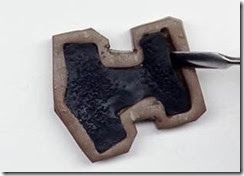 | Step 8: …you can also use a small metal spatula or needle tool to carefully lift the edges up and then the molded item is easier to remove. |
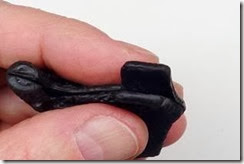 | Step 9: Create another piece as before and then mount the 2 pieces together matching the edges. |
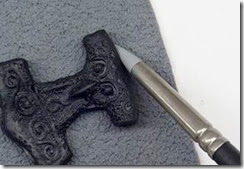 | Step 10: With a rubber chisel tip you can easily blend and smooth seams. You can also use your fingertips to gently pinch the largest seam together first and then use the rubber chisel for the finer details. |
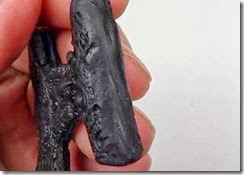 | Step 11: Seams won’t then have any of the texture. To camouflage you can create a similar texture by using the sandpaper to impress a little bit of texture over the seam, use part of the mold itself, or… |
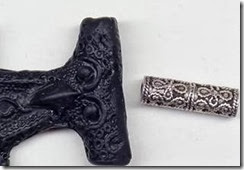 | Step 12: If you have any metal beads with an interesting texture that matches, you can use this as a roller on the seam. |
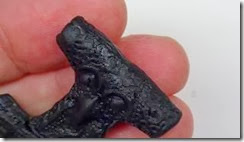 | Step 13: This pendant is done. All it needs is a hole for stringing and a bit of colour. One of my favourite method is to use mica or metal pulver on black for an antique metal finish. Of course you can choose any colour you like. Find my latest molds, both rigid and flexible in my Etsy shop WWW.beadcomber.etsy.com |
I’ve added a variety of molds to my shop including this Raven Thor Hammer Pendant mold. There is another hammer, a Sea Horse, Mermaid, Egyptian Themes and much more. I’ll be adding more tonight!
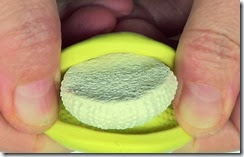
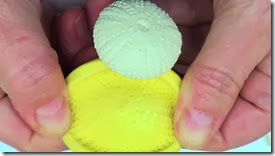
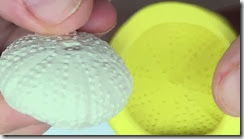

3 comments:
pretty nice blog, following :)
|OMG, don't stop blogging. I just found your blog and would love to learn more. I made a trade with a freind of mine and got this bunch of beads, but need to learn how make my own beads.
This is a great way to make something special.Thanks so much!
carlithequilter@gmail.com
Tina, you have been more than helpful to me and I want to thank you but also to tell everyone how generous you are sharing your knowledge with everyone.
One look at your lovely work and ideas, leaves me excited and eager to achieve. I hold my breath (almost) waiting to see what eventuates. Thanks Tina
maisiesjune@bigpond.com
Post a Comment